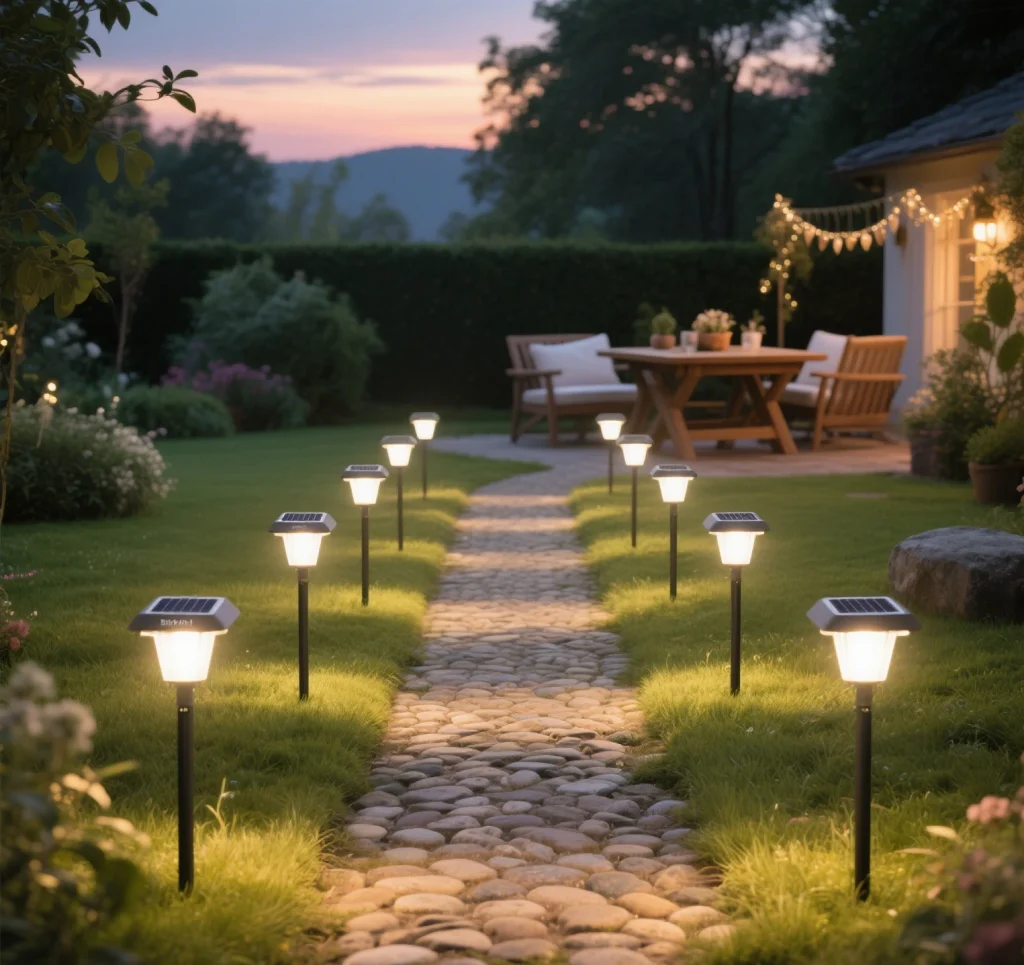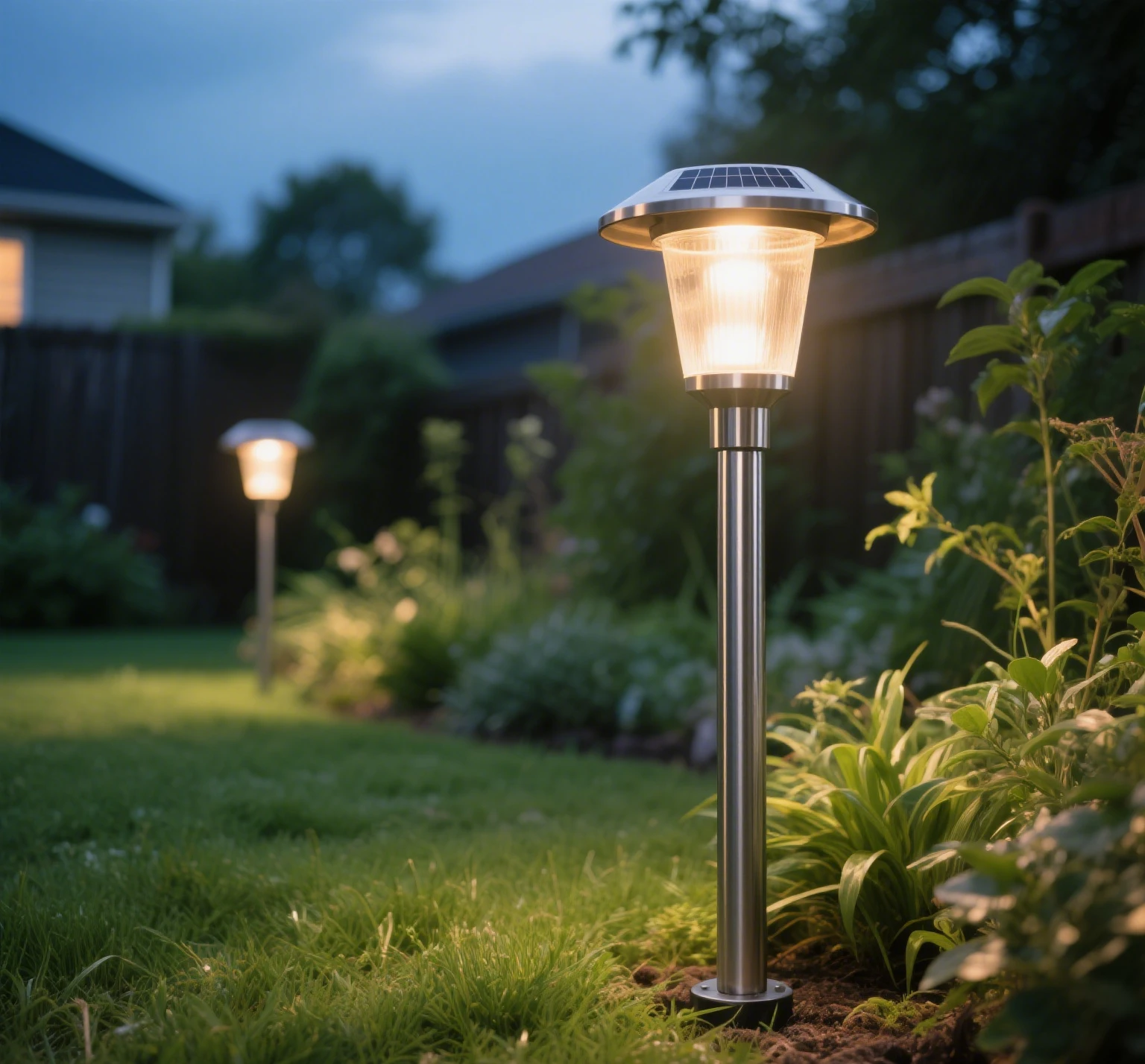Outdoor solar lights are a hit for eco-friendly American homes, but picking the right ones can be tricky. The U.S. EPA and Department of Energy (DOE) set clear standards for energy efficiency and environmental impact, yet many buyers end up with subpar products that waste energy or use harmful materials. This guide cuts through the confusion, offering practical tips based on EPA and DOE standards to help you choose compliant, high-performing solar lights and install them right.

EPA Standards: Picking Compliant Solar Lights
The EPA’s Energy Star program and low-carbon guidelines set a high bar for solar lights. Here’s what to look for when shopping:
- Energy Star Certification: Certified solar lights must have photovoltaic panels with ≥18% conversion efficiency, batteries lasting ≥1000 charge cycles, and standby power ≤0.5W. Check for the Energy Star logo and unique code on the packaging, which you can verify on the EPA’s website.
- Eco-Friendly Materials: EPA’s low-carbon list requires ≥70% recyclable materials in the lamp body, free of lead or mercury. Look for brands noting “PCR (post-consumer recycled) content,” like “50% PCR lamp housing.” A California buyer found these labels ensured greener purchases.
- Regional Fit: For rainy areas like Seattle, choose high-output models (≥30kWh annual generation). In sunny spots like Arizona, medium-power lights with strong storage batteries work fine, balancing cost and performance.
These EPA benchmarks ensure your solar lights save energy and align with green standards.
DOE Installation Guidelines: Setting Up Right
The DOE’s Outdoor Solar Lighting Installation Manual lays out clear rules to maximize efficiency and safety. Here’s how to follow them:
- Panel Angle: Set photovoltaic panels to match your local latitude (e.g., 30°–40° for California’s 32°–42° latitude) to capture maximum winter sunlight. A Florida homeowner adjusted their panel to 25° and saw better charging in December.
- Wiring Standards: If using extension cables, pick UL-certified outdoor cables rated for -40°C to 80°C to prevent shorts. This is key in extreme climates like Minnesota or Texas.
- Safety Distances: Keep solar lights ≥1.5 meters from gas lines or electrical cables, per the National Electrical Code (NEC). This avoids fire risks, especially in dense setups.
- Performance Test: After installation, DOE recommends a 3-day overcast test. If the light stays on ≥6 hours nightly, it’s up to snuff. A Colorado user confirmed their lights passed this test, ensuring reliability.
Proper installation per DOE rules keeps your lights safe and efficient.

Avoiding Common Pitfalls
Non-compliant solar lights can lead to headaches—dim performance, early failures, or even fines from local regulators. Here’s what to watch out for:
- Fake Certifications: Some brands slap on “Energy Star-like” logos without real EPA backing. Always verify the code online to avoid fakes.
- Poor Materials: Lights with low recyclable content or toxic materials (like mercury) violate EPA rules and harm the environment. A New York buyer regretted skipping PCR labels when their lights broke down fast.
- Bad Placement: Misaligned photovoltaic panels or cramped installations near utilities can cut efficiency or violate safety codes, risking penalties.
Checking specs and planning your setup avoids these costly missteps.
Practical Tips for Buying and Installing
To nail your solar light purchase and setup, follow these hands-on tips:
- Verify Certifications: Cross-check the Energy Star code on EPA’s website and look for UL or ETL marks for safety and waterproofing (IP65 or higher).
- Test Sun Exposure: Use a light meter app to ensure photovoltaic panels get 4–6 hours of direct sun daily. Reposition if shade from trees or buildings creeps in.
- Angle and Secure: Tilt panels to your latitude and use sturdy mounts to withstand wind. In hurricane-prone areas like Florida, add expansion bolts for extra stability.
- Monitor Performance: After setup, track light runtime over a week, especially in bad weather, to confirm it meets DOE’s 6-hour minimum.
These steps ensure your lights are both compliant and high-performing.
Wrapping It Up: EPA and DOE Standards for Smarter Solar Lighting
Following EPA and DOE standards when picking and installing solar lights is a no-brainer for American homeowners. EPA’s Energy Star certification guarantees efficient photovoltaic panels, long-lasting batteries, and eco-friendly materials, while DOE’s installation rules ensure optimal angles, safe wiring, and reliable performance. By sticking to these guidelines, you avoid duds that waste energy or break down fast, plus steer clear of regulatory fines. Better yet, compliant solar lights can cut energy use by 30% or more, saving cash and the planet. Check certifications, optimize panel placement, and test performance to light up your yard the smart, sustainable way.


Leave a Reply